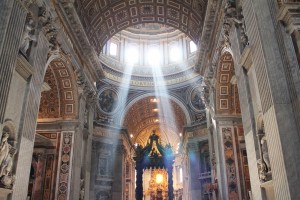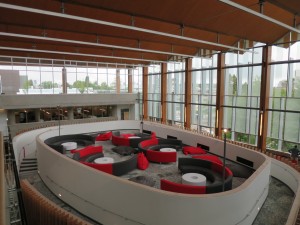Yo guys, hopefully last post of all wooohooooo!!
I have to say that this book dedicates particularly long passages to architecture and the description of buildings for a book that is seemingly about the holocaust. Evidently, the book’s context and deeper content reveal that Austerlitz is more than a heartfelt post-holocaust story, one of its main themes being the suppresion of memory. Furthermore, one of my questions is how does the role of architecture relate to this theme, and why does Sebald make such a big emphasis on it?
I spent a while thinking about this one, I could understand that Sebald’s character was a an architecture historian and for that reason it was only natural that he talk about architecture and the stories behind buildings. However, I could not relate its connection with the overall book and its themes. After some investigation I came upon this quote:
“From individual memory to collective memory, architecture can impact what and how we remember. An architect’s design might make the most of “suggestible” memories by creating built form that helps to “preserve” a memory— like a memorial, for instance. On the other hand, architecture can bring new meaning into our present as well.”
This quote set me off in a better understanding of Sebald’s use of architecture to characterize Austerlitz. I began thinking exactly how it is that today’s architecture affects the way I reexperience memories that happened in particular spaces. Although at first I had a lot of trouble thinking exactly how I had been affected by modern architecture, especially because Mexico is too chaotic for me to generalize my experiences, I could not think how Vancouver’s architecture had affected me. In order to find the answer to my question I began thinking of experiences where architecture has certainly affected the way I remember experiences.
After backpacking through europe for a month and a half I was visiting the 19th city of my trip, Rome. As any person visiting this city for the first time it was of the utmost importance that I visited the Vatican and saw the insteriors of St Peter’s Basilica. This place stood out because of its architectural mounstrosity but the way I experienced it, now that I think about it, applies to all the memories of all the famous plaza’, buildings and streets that left an impression on me in my trip around europe. Each one had a distinct element to them that makes the memories that much more vivid, making it easy to recall moods and environments. Okay, so St Peter’s Basilica, I was standing there, inside the Basilica, its enormous pillars, enormous dome and its enormous everything. The sun rays were shining through, and everything around me looked magnificent, massive, awe-inspiring and imposing. I really don’t know how much the space I was in affected the way I experienced the following moment, but I just remember that this is one of the moments in my trips that I became very self aware of where I was standing and what I had gone through to get there. It was a rushing sensation very hard to describe and it only lasted a few moments, but I quickly associate with the magnificence of the basilica. It seemed as though my past experiences were gathering at that particular point in time and I was becoming part of the numerous lives that had crossed paths with such a large building and its signifance. Its hsitory and the stories behind it interconnected with what I had experienced through the 18 cities I had gone through to get there.
I feel this is the reason Sebald gives importance to architecture to spaces in Austerlitz. Austerlitz is a character that is trying to connect with his past, and for that reason he finds himself drawn to the history and functions of pieces of architecture such as the Antwerp Station in Brussels. Through spaces and how they fulfill a function Austerlitz creates a connection with the past. Each building contains a certain path that draws to different memories, and also adds to the mood of ‘lost memories’ that envelopes the novel. Austerlitz recognizes that all the spaces contain a certain path that is unique to thema and adds to the mood of lost memories that enevelopes the novel.
With this in mind, I came back to the buildings we have in vancouver, and again how it could be that through their function they affect the way I have experienced memories. In today’s arcitecture from what I have observed of my own experiences it seems that we give a lot of priority to the efficiency of spaces at completing a certain function. Years and years of studying old buildings, have given us knowledge of what exactly a space can do and how that space can achieve its function. We find it aesthethically pleasing when a space is efficient, so I cant help but say (again, this is from what I have gathered from my experiences as I am no expernt I might be entirely wrong of what I am saying) that our architecture is very function-driven. We only need look at the Nest in UBC to observe that its beauty can be found in the fact that it is able to perform specific functions very efficiently. Furthermore, if I were to say that today’s architecture has affected the way I recount past experiences can be seen by the high priority we have given as culture to going about our business. Especially moving from Mexico, I can say that coming to Vancouver evereybody is going about their own business and has the priority to complete an objective and sometimes because of this people don’t get to appreciate the beauty of chaos/disorder and the liveliness that comes with it. Maybe this is the reason I have not paid enough attention to the architecture surrounding me, and its because it seems to be only there to complete a function, and it does this so well that it does not seem to bring attention to itself and stand out to the buildings that surround it.
http://sensingarchitecture.com/1328/what-is-the-role-of-human-memory-in-architecture/


